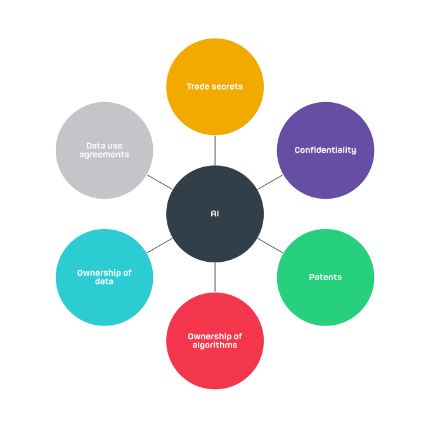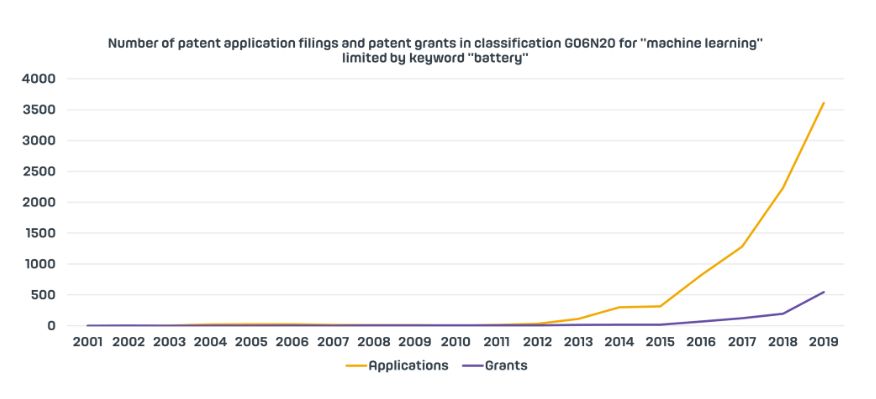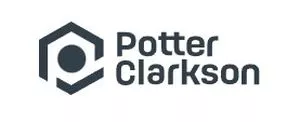Artificial intelligence (AI) and, in particular, machine learning is becoming a tool that is used in many technological fields. In the field of batteries and energy storage, the opportunities to apply AI and machine learning techniques are wide-ranging.
This article was first published in Issue 72 of bestmag.
AI and machine learning have application in materials discovery. Machine learning based models can make predictions about material properties to narrow down the number of candidate materials that require time-consuming testing.
The testing and verification of cells can be accelerated by use of AI that makes predictions of the future performance and safety of cells. AI also has application in the field of optimization where it can be used in the development of charging algorithms among many others.
Fundamentally, the complexity of a battery or battery system results in many variables that influence the ultimate performance. AI is well suited to making sense of complex systems and therefore we can expect to see many more applications of AI in the world of batteries, and energy storage more generally.
Many established companies, start-ups and universities are already embracing AI. KoBold Metals, a start-up backed by Bill Gates's Breakthrough Energy Venture uses AI to find the minerals needed for batteries. They claim to be "the first AI-powered mineral exploration company, innovating at the very upstream of the EV supply chain". Stamford University are using AI for image analysis to study atomic interactions in lithium iron phosphate as often used in positive electrodes. GBatteries are "pioneering an AI-based technology capable of ultra-fast charging lithium-ion batteries without compromising cycle life".
While AI has the potential to accelerate development, it can take a significant amount of investment to develop AI systems, work out how to apply AI to a particular problem and find and pre-process a significantly large quantity of high-quality training data for a machine learning process. It is therefore only proper to consider how to protect AI based innovations.

DATA IS POWER
Mathematician and data scientist Clive Humby is credited with stating that "Data is the new oil". In the world of AI, data is often key to success in various different areas. Machine learning algorithms are used to build a model. In order to build and refine the model, the machine learning algorithms need to be fed large quantities of high quality data. Once trained, those models can be unleashed on new data to make predictions, new designs and recommendations. Thus, as an example, when machine learning is used for the discovery of a new electrolyte composition, it may be necessary to use a data set that includes many different electrolyte compositions, such as compositions with different materials and with different component proportions, paired with details of the performance of a cell that uses the composition. The better the data, the better the resulting model. The better the model, the better the predictions that can be made using it. Thus, the quality of the data or the way it is processed before feeding it to the machine learning algorithm can provide you with a significant commercial advantage.
However, the training data is not the only valuable data. With the ready availability of sensors, the data generated by systems deployed in the field can be mined by AI for further innovations. For example, a battery management system may be configured to monitor real world performance of cells with a range of sensors. The data collected from those system can be processed to look for patterns from which new and innovative battery management algorithms can be derived.
It is therefore paramount that when implementing AI to an energy storage solution, you recognise the value of the data at all stages and takes steps to best protect it.
DATA USE AGREEMENTS
Owning the dataset used to train or refine your system is preferred because then you have ultimate control over its use. You can keep it confidential and prevent access to it by any competitor. This will typically require you to generate the dataset yourself or buy the data from another party.
However, it is often the case that data from a third party is required. In these circumstances it may be possible to come to a legal agreement on the use of that data. For example, it may be possible to secure exclusive use of the data for your particular commercial endeavour. As a practical example, a university may own a large dataset relating to the electrochemical properties of a variety of materials. A data use agreement could be drafted to enable you to have exclusive commercial use of that dataset for the purpose of developing electrode materials. If high quality datasets are not prevalent in the field, securing exclusive use of data can give you a significant commercial advantage over competitors who would then be denied access to the data.
What if you are the data owner? In this case you must ensure adequate confidentiality clauses are present in any agreement. There are also technical solutions available to enable a data owner to maintain data confidentiality while allowing use of the data by a third party. The fields of confidential computing and federated learning are focussed on providing a technical solution to confidentiality in addition to any legal solutions.
Finally, if a third party is helping develop your software, then it is important to ensure that you have rights to the use, or ultimate ownership of, the software and the data it generates.
TRADE SECRETS
A trade secret relates to business information that is secret, has value and is subject to reasonable protection. The exclusivity of trade secrets is dependent upon the measures put in place to keep them confidential within a business.
Trade secrets were at the forefront of a dispute between SK Innovation and LG Chem only last year (see bestmag Summer 2021 edition). The actions taken in this dispute illustrate both how valuable trade secrets can be and the fall-out that can occur when the protection in place is not sufficient.
In relation to AI, there are the obvious work products that would be readily understood to warrant trade secret protection. For example, the structure of the AI that can make better predictions than that of your competitors, or the proprietary way in which you trained a machine learning model. Steps should be taken to protect these aspects, limit access to only those people who need to know and to monitor that data confidentiality is being adhered to.
What is often overlooked is that the development of AI systems may not be straightforward and the path to success may be littered with results that didn't perform as well. In some instances, this data is just as valuable. Knowing what doesn't work can enable you to develop new products faster and more efficiently in the future. Therefore, recognising the data and algorithms that have value, whether successful or not, and putting procedures in place to protect them should be part of your trade secret strategy.
PATENTS
A patent is an IP right that describes an invention and includes claims that define a scope of protection for an invention that is deemed, among other things, to be novel and inventive. Patents are published and therefore the information within them is shared with the public. In exchange for sharing the information with the public, the patent holder is given a time-limited legal right to stop others from making, selling or using their invention as claimed.
In the eyes of many patent offices, the simple application of artificial intelligence to a technical problem is not enough to be inventive and therefore patentable. AI is known to have particular application in complex systems and therefore using it in a complex energy storage system is typically deemed to be obvious.
This does not mean that innovations in the world of AI and machine learning are not patentable. It just means that you need to have done something more than apply AI to a problem in a conventional way. The filing figures show that there has been a significant increase of innovation in this area.

PROTECTING AI REQUIRES BATTERY OF RIGHTS
A strong IP strategy normally involves combining different types of protection and this is certainly true when working with AI. Patents, trade secrets, and recognising the value of the data and the algorithms of the resulting system is a must if you want robust IP protection.
WHO IS PATENTING WHAT IN THE FIELD OF AI?
Patent searches for AI applied in the field of battery technology yield many results and the following are a representation of what is being protected by some of the larger players.
Tesla Motors Canada, in their patent US 10,804,562, obtain protection for a "computer-implemented method for determining a concentration of a component of an electrolyte" which included capturing "a spectrum of a sample solution of the electrolyte" and "preparing a database of spectra corresponding to solutions having predetermined concentrations of the component of the electrolyte". The main patent claim further includes "determining a machine learning model using the database of spectra, the machine learning model based on at least one of the plurality of spectral features and the concentration of the component of the electrolyte; and determining the concentration of the component of the electrolyte in the sample solution using the machine learning model, wherein the component of the electrolyte is LiPF."
Hewlett Packard Development Company have filed a patent application, WO 22/047204, which claims "A server comprising: a receiving unit to obtain a set of battery attributes associated with a battery of a client device; a prediction unit to predict a battery condition by applying at least one first machine learning model to the set of battery attributes, wherein the battery condition comprises battery swelling, battery memory effect, battery performance degradation, or any combination thereof; and a recommendation unit to apply a second machine learning model to the predicted battery condition to: predict a remaining life of the battery; and recommend an action to be performed based on the predicted remaining life of the battery."
Microsoft Corp in their patent US 11,036,250 claim "A computer-implemented method of using a battery to stabilize a regional power grid, comprising: monitoring a frequency regulation signal from the regional power grid and market conditions for obtaining power from the regional power grid; predicting from the frequency regulation signal and market conditions a future period when the battery may be exposed to the regional power grid to at least one of charge or discharge power in accordance with a future frequency regulation signal to stabilize the regional power grid through participation in the regulation of the regional power grid; calculating a regulation control signal that tracks the future frequency regulation signal during the future period; and during the future period, at least one of charging or discharging the battery in response to the regulation control signal."
The content of this article is intended to provide a general guide to the subject matter. Specialist advice should be sought about your specific circumstances.


